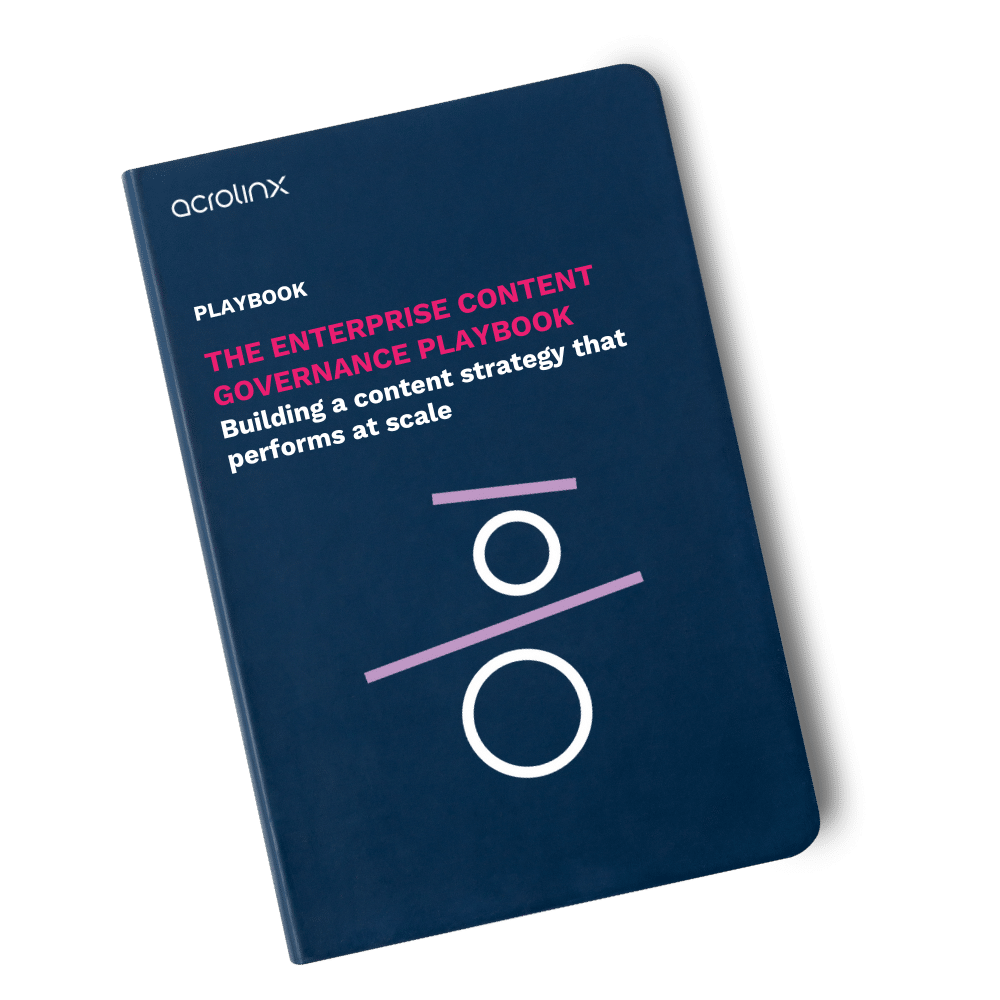
Before we get into this blog, let’s take a moment to think about your enterprise content. Consider these questions:
- Does your company actually have full governance over its content?
- Do all stakeholders understand if their content is successful?
- Is your investment in content creation, proofreading, and translation paying off?
- Are you effectively managing your corporate terminology with a terminology management system?
You answered “yes” four times? Great! You seem to have full governance over your enterprise content. If you only answered with a shrug (or “no”), read on. We’ll show you how to get started with enterprise content governance.
How does well-governed content relate to your corporate terminology? Well the truth is, quite a lot. Correct and consistent terminology is beneficial to all your content workflows. And to the entire organization.
Every customer touchpoint is a chance for you to show your brand identity and provide value to your customers through content.
How terminology management supports content governance
A well-implemented terminology management system makes sure your content is consistent and accurate across all workflows. Correct and consistent terminology ensures content clarity and strengthens your brand identity across every customer touchpoint. It also makes sure that every piece of content delivers value, whether it is a product description, blog, or user manual.
Practical example: Translation and terminology
Do you work for a large enterprise? Then translations are an integral element of your content workflows. In this context, terminology work plays an important role in several areas:
- Content creation
- Content review
- Terminology optimization
- Translation handover
- Translation process
- Translation review
By integrating a terminology management system into your translation processes, you ensure consistency, clarity, and comprehensibility across multiple languages. Without it, terminology issues in the source content can ripple into translated content, causing inconsistencies and misunderstandings.
Using the right terminology management tools, you can streamline these processes and reduce costly errors.
Content governance best practices
Now that we’ve established the link between terminology and governance, let’s explore how to implement effective content governance best practices.
We have three tips directly from the field, brought to you by content governance experts:
Tip 1: Content without measurement is wasteful content
Every company creates content. This involves workflows: Planning, writing, checking, and publishing. Almost every company has internalized these workflows, from five-person startups to corporations. But do they also have a content strategy? And how do they measure their success?
The COMA[E] study of 2017 revealed: “Just under one in two companies has written down its content marketing goals in a strategy. Yet successful content marketers are almost three times more likely (61%) to have a strategy in place than their colleagues who are dissatisfied with their success (23%).”
Three particularly exciting findings about measuring success emerge from the “2020 B2B Content Marketing” content marketing study:
- 80% of respondents measure the performance of their content
- 65% have defined KPIs
- 43% measure the ROI (return on investment) of their content
What can we conclude from this? From a technical point of view, measuring content performance is easy. Companies use tools like Google Analytics, and can see how users interact with their content. However, defining a content strategy in advance seems to be more challenging.
In other words, it isn’t only necessary to plan “what I want to publish,” but also to clarify whom you want to target with your content and for which purpose.
If your company is one of more than 50% of companies with a content strategy: how can you tell whether your content is successful? This is where KPIs become important. These are an integral part of any content strategy. For example, look at the bounce rate and time on page for your web pages. These numbers may indicate whether the given web page is relevant to your visitors. Are visitors staying or are they leaving right after visiting? No matter which metrics you choose: specify what is relevant to you, what the metrics mean, and which insights you want to glean from them.
Another important aspect to consider is the conversion rate. So you need to establish the goal of your content. For example, you might want to drive visitors to a particular web page to submit a contact request. Measure how often you achieve these goals and relate them to other metrics.
Recommended read: you can learn more about KPIs and content marketing here.
You put so much effort into your content. You invest a lot of money to produce and publish it across your channels. Without measuring success against defined benchmarks, you’re wasting your potential. KPIs help you to gain insights that you can use to further refine your strategy or, if necessary, correct it.
Tip 2: Combine qualitative and quantitative metrics
Metrics are an important tool to make sure that your content efforts are successful. This means looking beyond your performance metrics, to analyzing and monitoring the quality of your content.
This is where Acrolinx comes in. Our platform is based on “Goals, Guidance, Governance.” This means full content governance through individual or automated guidance, aligned with your company’s content strategy and content style guide. Acrolinx allows you to measure characteristics that make your content distinctive, impactful, and successful. We measure:
- Spelling and Grammar
- Tone
- Clarity
- Consistency
- Scannability
- Terminology
- Inclusive language
By combining qualitative and quantitative metrics, you can understand what content is successful along with the reasons why. With our Content Cube, you can map both types of metrics and correlate them to each other.
Tip 3: Terminology processes are a must
Let’s summarize what we learned about content governance so far: For impactful content, you need a content strategy, accompanied by success measurement. Strategic success measurement includes both quantitative and qualitative metrics. It’s not enough to only consider performance metrics. Make sure you combine them with content quality measurements. By correlating both measurement dimensions, you can learn why your content is performing well or not. This insight will help you shape new content to be more impactful.
There are many aspects of impactful content. Inclusive language, the right tone, clarity, and more. Terminology is one of these aspects. And it’s an outstanding one, as it cuts across all areas of your business and is vital to successful content, as we’ve already demonstrated above. It’s important to remember that terminology can’t exist in isolation. On the other hand, terminology work is characterized by workflows. No doubt your company has already implemented a lot of workflows. What you need to do now is to integrate the terminology workflows into the existing ones in a meaningful way.
Examples include:
- Translation processes
- Content creation
- Terminology research
- Terminology checking
- Term Discovery
- Automated content checking
The role of Acrolinx in content and terminology management
Integrating a terminology management system into your content governance strategy offers significant advantages for your business. Here are the key benefits of content governance:
- Enhanced consistency: Makes sure all content adheres to your brand voice, improving clarity and trust across channels.
- Improved efficiency: Streamlines workflows by automating terminology checks and minimizing errors.
- Better customer experience: Delivers clear, consistent, and engaging content that resonates with your audience.
- Scalability: Supports your business in expanding content creation efforts without compromising quality.
Acrolinx goes beyond basic terminology checks by offering a comprehensive platform tailored to manage your business’s terminology. It seamlessly integrates with existing tools, providing:
- Advanced terminology research and management capabilities
- Automated content checks to maintain terminology consistency
- Data-driven insights to understand and optimize the impact of terminology on content performance
With Acrolinx, you gain the ability to measure and refine your terminology processes while aligning them with your company’s content strategy. The result? Consistent, high-quality content that scales effortlessly and drives better outcomes.
Interested in learning more about the benefits of consistent terminology? Check out our guide.
Are you ready to create more content faster?
Schedule a demo to see how content governance and AI guardrails will drastically improve content quality, compliance, and efficiency.

Hannah Kaufhold
is a Senior Marketing Manager at Acrolinx, with over ten years experience in content strategy and content creation. They hold a Master’s degree in linguistics. Hannah has a strong interest in controlled languages and terminology and is passionate about diversity and inclusion. In their free time, they enjoy spending time with their family and reading.





